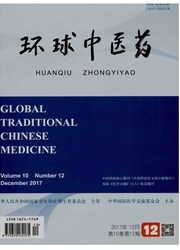

 中文摘要:
中文摘要:
利用中国知网、万方、维普、Pub Med数据库,系统检索1949年以来关于"十八反"中海藻甘草反药组合同用的研究文献,检索过程中剔除综述及临床研究类文章,选取实验研究方面的文章,总结归纳海藻甘草反药组合配伍使用的适宜和禁忌条件。初步认为海藻与甘草1∶1、1∶2、1∶3配伍为适宜条件,海藻与甘草3∶1比例以及大于3∶1比例配伍为禁忌条件,并且随着海藻剂量增加,毒性增强。应用于特定病理模型下的海藻玉壶汤中,为海藻甘草配伍适宜条件。现有文献显示,短时间给药为配伍适宜条件;腹腔注射以及长时间给药为配伍禁忌条件。而煎煮方法、不同品种方面的研究较少,很难从少量的实验中总结归纳出宜忌条件。因此海藻甘草能否同用不能一概而论,而是受到不同条件的限制。今后应当进一步开展不同品种的药用海藻与甘草配伍的宜忌条件研究,增加多条件、多层次交叉研究,完善海藻甘草反药组合配伍的宜忌条件,以期为临床安全用药提供重要的实验依据。
 英文摘要:
英文摘要:
This article summarized the suitable conditions and contraindicant conditions of antagonism compatibility sargassum and glycyrrhiza from the selected experimental research articles by searching“Sargassum and Radix Glycyrrhizae compatibility of Chinese medicine Eighteen antagonism” from Wan Fang, CNKI, and VIP database since 1949. The efficacy and toxicity of the anti-drug combination are affected by many conditions, including proportion, dose, extracting manner, prepared varieties and route of administration. We can concluded from literatures that it ’ s suitable when the ratios of sargassum and glycyrrhiza are 1:1,1:2 or 1:3;while the contraindicant conditions are when the ratios are 3:1 or higher than 3:1, or injecting intraperitoneally for a long time. Therefore, whether sargassum and glycyrrhizae can be used together or not is affected by different conditions. In the future, we can make more researches on it to enrich suitable and contraindicant conditions for sargassum and glycyrrhiza compatibility.
 同期刊论文项目
同期刊论文项目
 同项目期刊论文
同项目期刊论文
 期刊信息
期刊信息
